Research
Research
- Planning and Coordination Division
- General Services Division
- Technology Services Division
- Dept. of Agricultural Environment
- Dept. of Agricultural Biology
- Dept. of Agro-food Safety and Crop Protection
- Dept. of Agricultural Engineering
- Dept. of Agricultural Biotechnology
- National Agrobiodiversity Center
- Research Paper
Dept. of Agricultural Biology(농업생물부)
The Agricultural Biology Department consists of three divisions. The Industrial Insect and Sericulture Division is responsible for the development of the industrial use of insects, including conservation, feeding, healing, and the packaging of teaching and other materials. The Apiculture Division conducts research into bee breeding, beekeeping environment control, bee pollination, and the development of functional materials for bee products. The Agricultural Microbiology Division is in charge of the national management of microbial resources, the development and commercialization of microorganisms that promote crop growth, and also is responsible for the discovery of high value-added functional materials derived from microorganisms.
The Department made remarkable achievements in 2020. These include having 73 articles published in world-renowned journals, 61 patent registrations completed and a further 65 patent applications filed, and 295 technologies transferred to the private sector. Among these outstanding achievements, one study was included in the list of 100 national R&D achievements.
(1) Industrial Insect and Sericulture Division
1. Investigation and conservation of insects and related healing programs
Twenty insect species registered as national living resources have been preserved, and three species, Tenebrio molitor, Zophobas astratus, and Locusta migratoria, were newly registered in 2020. The insect collection includes over 180,000 specimens of 3,500 species, the DNA collection contains over 20,000 stocks of 4,800 species, and the CO1 DNA barcodes contain over 12,500 specimens of 3,500 species. Industrially useful insect species have been searched and selected, and breeding methods have been developed through physiological research. Mass rearing methods for Z. astratus and L. migratoria have been developed, as have artificial diets for Protaetia brevitarsis and T. molitor. For the development and dissemination of seed insects, exemplary varieties of major industrial insects are being bred. In the case of T. molitor, the developmental and spawning characteristics of 17 populations were compared, and 103 strains with a short growth period and high weight were selected and maintained. Healing programs using insects have been developed with scientifically proven effects in order to diversify the uses of emotional insects. Species selection and evaluation methods have been developed to utilize industrial insect resources, as well as four healing programs using insects such as Papilio xuthus and Teleogryllus emma.
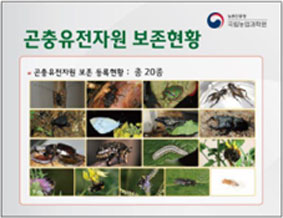 Conserved insects
Conserved insects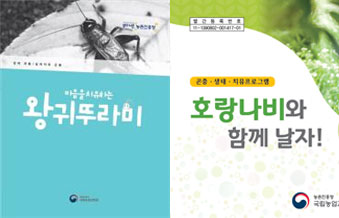 Healing program books
Healing program books
2. Utilization of the black soldier fly for environmental remediation and development of high value-added substances
Production efficiency has been improved through research into improvement of the mating and oviposition efficiency in black soldier flies for the treatment of food waste, and an optimal decomposition method for food waste and agricultural byproducts has been investigated. In addition, the standard for safe use of by-products has been indicated through monitoring of fecal soil. In order to improve the utility and value-added benefits of black soldier fly larvae after food waste treatment, we have investigated the immunity-inducing conditions for the mass expression of natural antibiotics from larvae and evaluated the safety of high-functional feed additives. For the treatment of food waste, salinity reducing agents have been selected and growth and toxicity evaluations conducted in larvae.
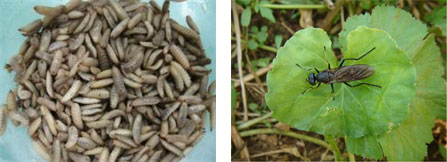 Black soldier fly larvae and adult
Black soldier fly larvae and adult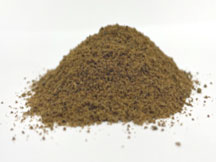 Animal feed
Animal feed
3. Draft genome of the edible oriental insect Protaetia brevitarsis seulensis
The white-spotted flower chafer Protaetia brevitarsis seulensis is an important insect species. In our previous work, Protaetia brevitarsis seulensis was registered as a food stuff in the Korean Food Standards Codex. Recently, we performed whole genome sequencing of Protaetia brevitarsis seulensis using the Illumina and PacBio sequencing platforms, with results estimating the genome size of the insect to be 656.8 MB, with 40GB (155X) of short-read sequences. The 692.7MB of the representative draft genome was assembled into 224 contigs from 59.9GB (120X) of error-corrected long read sequences. The N50 of the assembled genome was 4.9 MB bases, and 344MB of the assembled contigs were covered by repeats, which are unclassified elements. Totally, 23,551 genes were predicted from the genome with an average size of 8217.3 bases, with a 99% complete BUSCO score. Finally, 15,667 (66.52%) of genes are known to have homologous sequences in Genbank, and 10,844 (i.e., 46.04%) genes also have their gene ontology descriptions. The evolutionary relationship among these genomes was assessed with 218 single-copy genes through phylogenetic tree reconstruction. The genomes were grouped into exact family clans without any distortion. In continuation, the gain and loss among those genomes were also assessed for the insect genome.
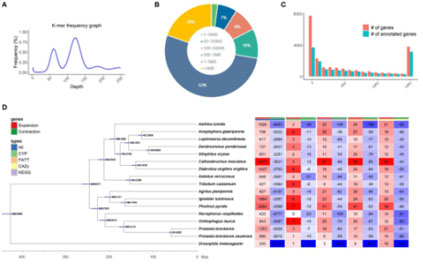
Whole genome sequencing of Protaetia brevitarsis seulensis
4. Preventative and curing effects of Hongjam on Alzheimer’s, dementia, and Parkinson's disease
Hongjam, which is prepared from mature silkworms containing various functional substances, has produced an improvement effect on memory in a mild cognitive impairment mouse model. In addition, it was confirmed that spatial memory, social memory, curiosity about new objects, and motor control ability were improved in Alzheimer’s dementia mouse models supplemented with Hongjam, and the accumulation of toxic β-amyloid plaque in Alzheimer’s dementia mouse brains was diminished. Furthermore, in a Parkinson's disease mouse model supplemented with Hongjam, the ability to hang on a wire and control limbs was superior to those of a control through improvement of motor performance. Hongjam also protected dopaminergic neurons in substantia nigra in the brains of the Parkinson’s disease mouse model. Finally, we discovered that this memory improvement, prevention, and curing of Alzheimer’s, dementia, and Parkinson’s disease were accomplished by enhancing mitochondria functioning.
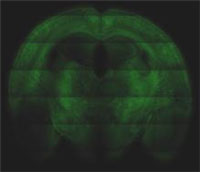 Normal mouse
Normal mouse Parkinson disease mouse
Parkinson disease mouse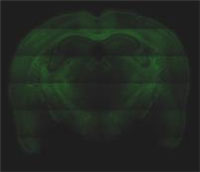 Parkinson disease mouse + Hongjam
Parkinson disease mouse + Hongjam
Accumulation of toxic β-amyloid plaque in the Alzheimer’s dementia mouse brains
5. Novel application development of sericultural products including silk protein
Traditional sericultural products have been used as fiber. Functional sericultural laboratory studies the extraction and/or fraction method, structure and conformation, physical and mechanical properties, and biological functionalities to widen the application fields of sericultural products including silk protein. Freeze-dried silkworm powder for blood glucose lowering effects, silk fibroin peptide for neuroprotective and cognitive functioning, mulberry fruit, Nuedongchunghaco culture using Paecilomyces tenuips, and silk eardrum patches have been investigated.
(2) Apiculture Division
1. Breeding of new Apis cerana and Apis mellifera
The Korean Apis cerana population has greatly decreased in recent years due to the Sacbrood virus (SBV), a causative agent of larval death and colony collapse. Therefore, development of methods to counter this viral disease is urgently needed, and it is of paramount importance to have reliable methods that ensure for the propagation, breeding, and mating control of queens, such as artificial queen rearing and instrumental insemination techniques. We bred two lines (Halla, Backdo) Apis cerana against the Sacbrood virus (2018), evaluating the honey collection, hibernation, and hygienic behavior of triple-crossed hybrid honeybees (Apis mellifera) which were selected from 8 cross combinations of 6 inbred lines in South Korea. The average honey collected by the triple-cross hybrid (AC×D) was 10.7kg, which was higher than other cross combinations, 6.1~9.1kg, or the commercial line, 5.3~6.5kg, the control group.
2. Integrated pest and disease management in honeybee hives
For purpose of selection and development of substitute compounds for Fumagillin to control Nosema disease, eight compounds were purified and isolated from the MeOH extract of Cordyceps militaris media. Twelve compounds were isolated from snowbell (Styrax japonica) honey. Finally, gallol and PC exhibited significantly higher activities than fumagillin, and PG exhibited activity at a similar level as fumagillin. As such, these three compounds (gallol, PC, PG) were selected as potentially beneficial alternatives for fumagillin. The Vespa vellutina, an invasive pest, was found to have high control efficiency using traps on hills around beekeepers when controlling wasps in spring. A mixture with vinegar for sushi was the most effective method of capture at 19%. In addition, dorsal black displayed 100% insecticidal power after 240 minutes, 70 minutes, and 60 minutes of treating clothianidin (liquid hydrant, 8% active ingredient) with 80,000 ppm, 40,000 ppm, and 24,000 ppm, respectively, to evaluate wasp pesticides.
3. Effect of foraging activity of pollinators and productivity increase of major agricultural crops
The rate of blueberry fruit setting when pollinated by Bombus terrestris was recorded at 87.7%, 89.6% under Apis mellifera, and 66.5% with Osmia cornifrons as pollinator. Compared to natural field conditions, blueberry crop productivity when using B. terrestris as a pollinator was 9% and 15% higher when using A. mellifera. Under vinyl-house conditions, the fruit set rate of apricots was higher when pollinated by A. mellifera (92%) and B. terrestris (89%) compared to the control (83%). Consequently, the economic benefit from the apricot crop when A. mellifera was used as pollinator, compared with natural field conditions, was improved by 4% and 10% when B. terrestris was used. For welsh onion (Allium fistulosum) pollinated by B. terrestris, an economic improvement of 3.4% in the breeder's case was obtained.
4. The quality and efficacy of bee product utilization
Our projects have been characterized as relating to Korean honey, bee pollen, royal jelly, propolis, bee venom, bee wax, and drone pupae so that each product can be identified by the end user as authentic, recognised by its unique compound, and known for its health benefits. Besides extensive chemistry applications, bee products have specific antimicrobial, anti-inflammatory, antioxidant functions, and an array of other bioassays can test bee products for their efficacy and provide clinical proof of the benefits of bee products. This will lead to greater access and competitiveness in the higher-value health food and nutraceutical markets. Also, we take legal, media, social, and scientific action aimed at creating a new regulatory and control frame that prevents the commercialization of false honey and bee products that are so damaging to people and the planet. The purpose of our study is to distribute and provide information on the manufacturing, processing, and marketing of value-added bee products.
(3) Agricultural Microbiology Division
1. Microbial resources management
The Korean Agricultural Culture Collection (KACC) has been established within the Rural Development Administration in 1995. KACC, an organization based on the national law pertaining to "preservation, management, and utilization of agricultural genetic resources", works to conserve microbial diversity in agricultural and food environments and provides various services for microbial research societies. KACC is a domestic and international depository authority for patent organisms and also manages a national integrated back-up depository for all patent microorganisms in Korea. KACC retains over 25,900 cultures of microorganisms as of 2021, and distributes around 4,000 cultures a year for microbial researchers. It is accessible to the public via website (http://genebank.rda.go.kr). KACC provides strain information on the website which not only includes simple information about microbes, but also morphological images and DNA sequence data. The database is constantly updated. KACC performs taxonomic and ecological research on selected groups focused on food microorganisms including bacteria, such as the genera Bacillus and lactic acid- and acetic acid- bacteria and fungi including Penicillium and Aspergillus. KACC will provide a long-term preservation service for industry-university-public research institutes in 2021, considering the loss of microbial resources that weren’t registered as national resources.
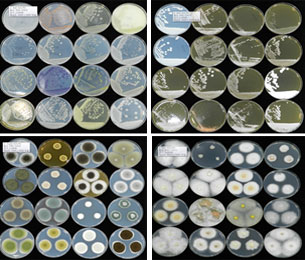 Microbial resources
Microbial resources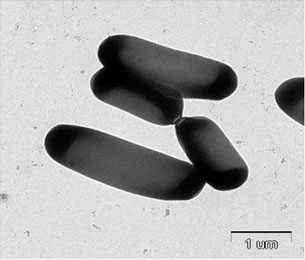 New bacterial species
New bacterial species KACC homepage
KACC homepage
2. Plant growth promotion microbe research
Our project is the study of microorganisms that promote plant growth and health. Using microorganisms isolated from various environments such as soil, muscle, and root areas can help promote plant growth and immune activities to increase resistance against environmental stresses (temperature, drying, salt, etc.). To investigate the properties of beneficial microorganisms with the effects mentioned above, mechanisms of action, and plant-microbial interactions, studies on active substances, including genetic analysis of microorganisms, are being conducted. We pick out microorganisms belonging to the genus Bacillus, Pseudomonas, Trichoderma, and Variovorax, evaluate them at farms to commercialize, and actively participate in their development as microbial agents (e.g. biostimulants and biofertilizers). In addition, through microbial cluster research, the composition and distribution of soil microorganisms are studied, and microbial clusters related to tomato growth investigated to establish field applications.
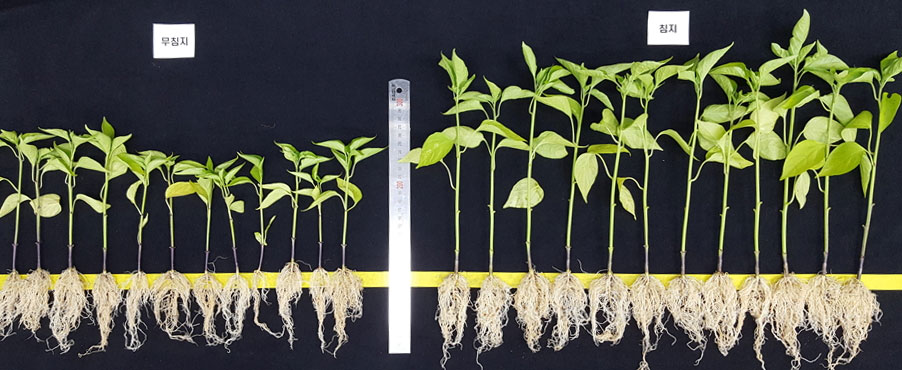 Plant growth promotion
Plant growth promotion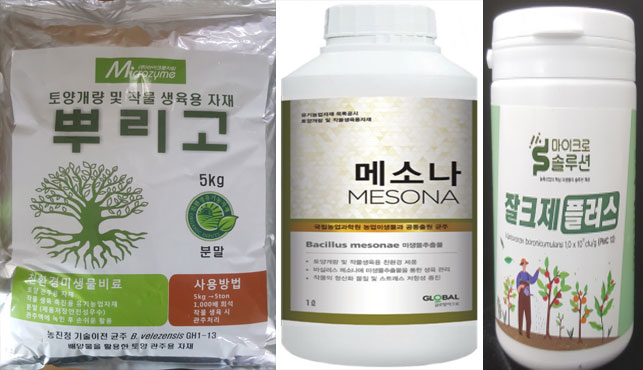 Biostimulants
Biostimulants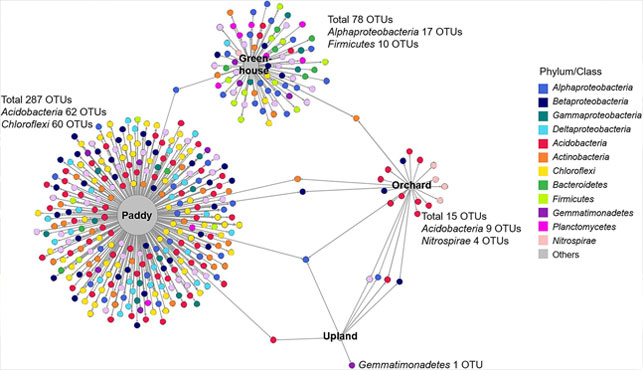 Microbiome analysis
Microbiome analysis
3. Biocontrol research
Eco-friendly biocontrol research is conducted to control plant pathogens and insect pests using microorganisms. Our project is aimed not only at controling plant pathogens using the rhizosphere and endosphere microorganisms isolated from various environments but also at enhancing plant immunity. Suppressing various fungal or bacterial plant diseases, microorganisms with an antagonism against pathogens or microorganisms that induce resistance to plants are being studied. Moreover biocontrol research is being conducted using insect pathogenic bacteria (Bacillus, Serratia etc.) and insect pathogenic fungi (Isaria, Metarhizium, Beauveria, etc.) to control insect pests such as the Beet armyworm, Bemisia tabaci, and Thrip. In addition, research is performed on microbial-derived compounds that control pests, and some experts are actively participating in the development of biocontrol agents for field applications. Recently, research to control the occurrence of disease using microbiomes has begun, and biocontrol research relying on bacteriophage or RNA interference (RNAi) will be promoted in the future.
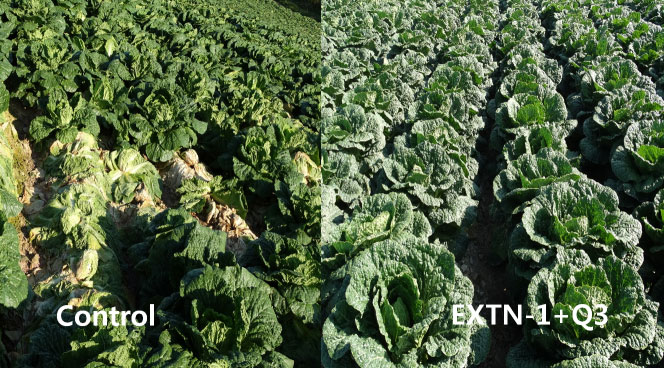 Disease control
Disease control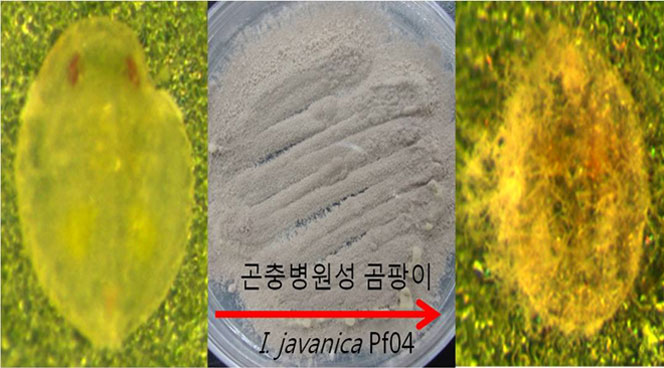 Insect control
Insect control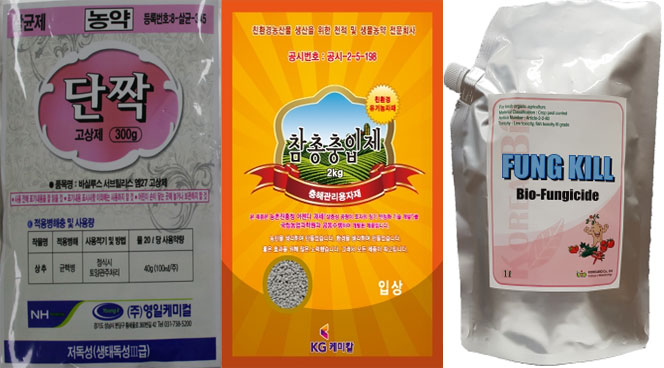 Biopesticides
Biopesticides
4. Research on high-value-added microbial materials
The development of materials derived from natural products is demanded as consumers and industries seek to avoid synthetic raw materials. As such, research into the development of high value-added functional materials is being carried out via the investigation of metabolites derived from microorganisms. It is also important to develop material using microorganisms to reduce the by-products generated by chemical synthesis and environmental pollution. Research on the development of high value-added functional materials is being carried out through the discovery of metabolites derived from microorganisms, and further research is underway to improve production using biotechnologies such as microbial genome editing and genome information to change characteristics into forms that can be used in agricultural and industrial sites or introduce biosynthesis pathways. To identify microbial-derived metabolites, we characterize indigenous microorganisms isolated from domestic agricultural environments, wild flowers, and food. In particular, we conduct the discovery of various new surfactants through isolation of yeast-derived materials, structure analysis, and characterization. We also carry out the heterologous expression of biosynthesis genes to increase the biosurfactant yield using genetic and metabolic engineering tools. In order to develop cell factories capable of efficiently producing carotenoids, a natural pigment material with antioxidant activity, we are conducting research to discover microorganisms that produce various natural pigments in large quantities and to secure biosynthetic pathway genes. In addition, to use microorganisms as alternative protein foods in preparation for future food-related challenges, research is being conducted to discover edible molds and bacteria and to produce high-density proteins through production optimization and mass culture.
5. Bioremediation Research
In Korea, a considerable amount of plastic is used in the agricultural sector for soil mulching, greenhouse, silage, and so on. Accordingly, proper disposal methods for waste plastic is needed. To resolve this issue, we are screening microorganisms and their enzymes for the degradation of petroleum-based plastics such as polyethylene (PE) and biodegradable plastics such as polylactic acid (PLA) and polybutylene adipate terephthalate (PBAT). In addition, we are striving to identify a mechanism by which plastics biodegrade as well as pretreatment methods for plastics such as high temperature and low pH for effective biodegradation Finally, we are aiming towards industrialization of plastic-degrading and plastic–producing microorganisms.
Chemical pesticides have made a significant contribution to modern agriculture. Still, they may threaten human health and the environment if they are abused and remain in crops or soils in amounts that exceed the allowable amount of residue. We are trying to resolve this issue using microorganisms, screening and characterizing them to degrade residual pesticides. In addition, we are identifying mechanisms with which residual pesticides can biodegrade. Finally, we are aiming for the industrialization of pesticide-degrading microorganisms.
